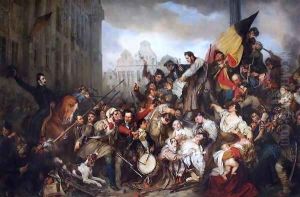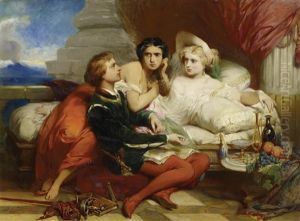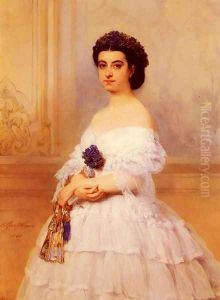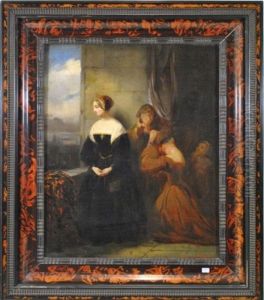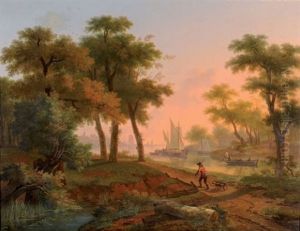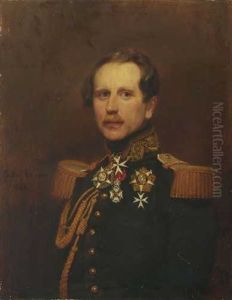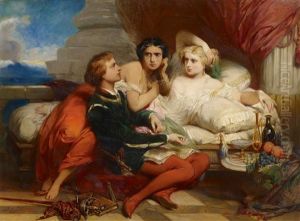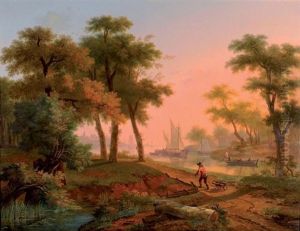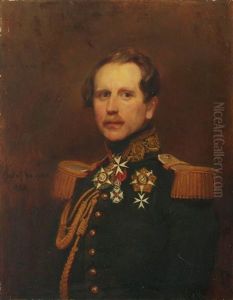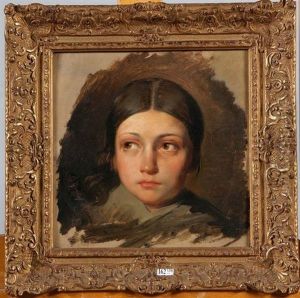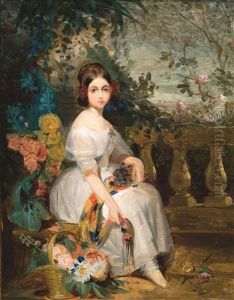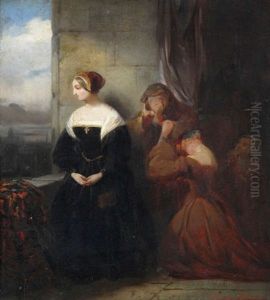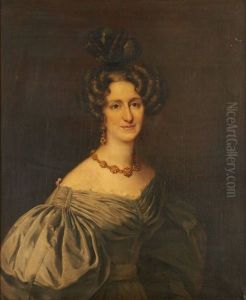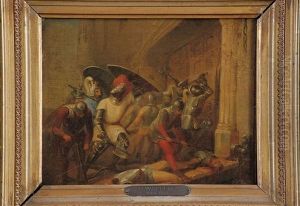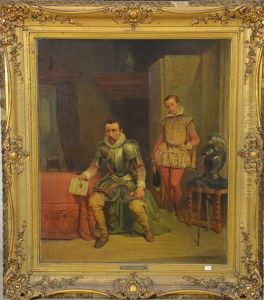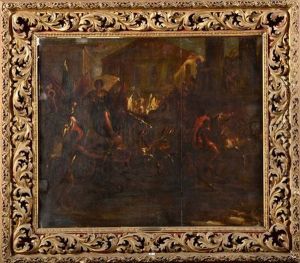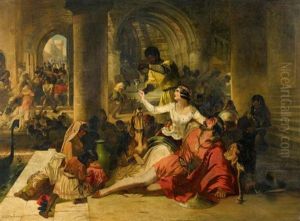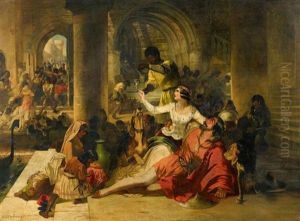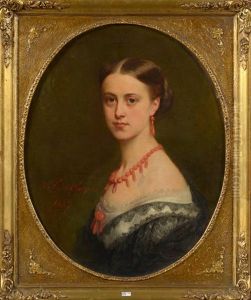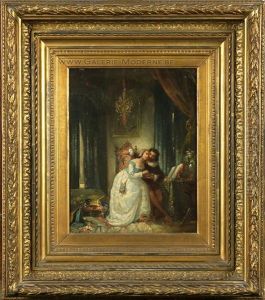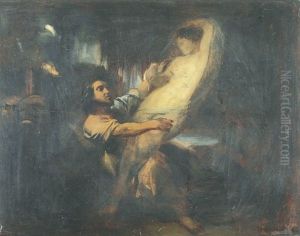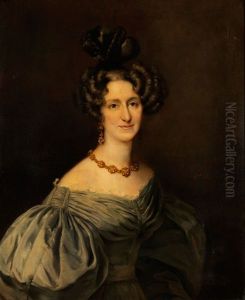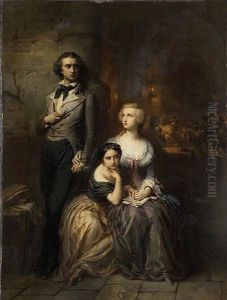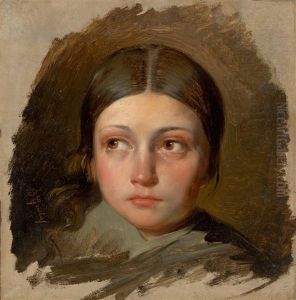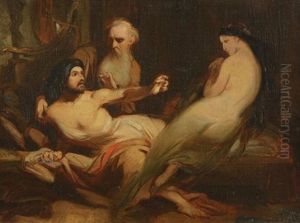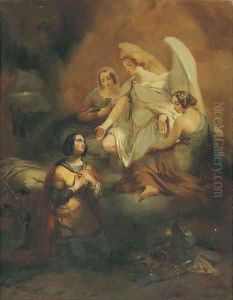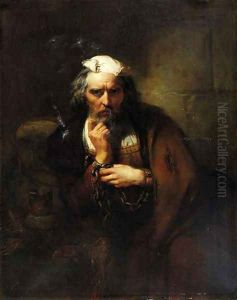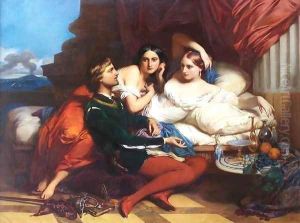Baron Gustave Wappers Paintings
Baron Gustave Wappers was a significant figure in the Romantic movement of Belgian painting, born in Antwerp on August 23, 1803. His early life was steeped in the rich artistic tradition of Antwerp, a city renowned for its contributions to the Northern Renaissance through artists like Peter Paul Rubens. Wappers' education at the Royal Academy of Fine Arts in Antwerp laid the foundation for his artistic career, where he was deeply influenced by the Romanticism sweeping through Europe. This movement, characterized by its emphasis on emotion, individualism, and the sublime, profoundly shaped Wappers' approach to art.
Wappers' work gained recognition and acclaim in the 1830s, particularly with his masterpiece 'Episode of the Belgian Revolution of 1830', unveiled in 1834. This painting, which depicts a poignant moment in Belgium's fight for independence from the Netherlands, was celebrated for its emotional intensity and dramatic portrayal of nationalistic fervor. The Belgian government purchased the painting, signifying not only Wappers' success but also the role of his art in the burgeoning Belgian national identity.
In 1836, Wappers was appointed as the director of the Royal Academy of Fine Arts in Antwerp, a position that allowed him to influence the next generation of Belgian artists. His tenure at the Academy underscored a period of transition in Belgian art, as he encouraged the exploration of Romantic themes and techniques. Despite his affiliation with Romanticism, Wappers' later works began to reflect the influence of the Realist movement, showcasing his adaptability and breadth as an artist.
Wappers' contributions to Belgian art were recognized by King Leopold I, who ennobled him as a baron in 1845. Throughout his career, he received numerous awards and honors, both in Belgium and abroad, cementing his status as a key figure in 19th-century European art. Gustave Wappers died on December 6, 1874, in Paris, France. His legacy is preserved in his dramatic, emotionally charged works that continue to captivate audiences, embodying the spirit of Romanticism and the struggle for Belgian independence.
